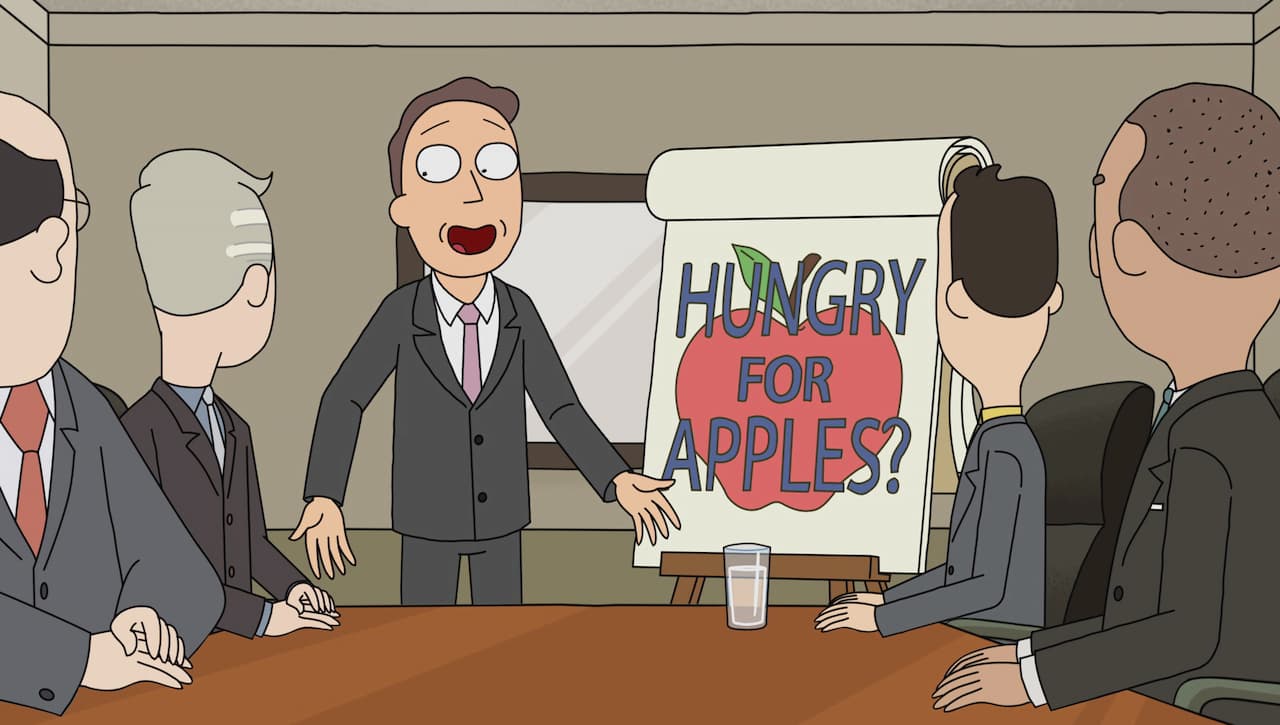Training our teams' Dissent Muscle
There's this episode in Rick and Morty, where Jerry, Morty's Father, is trapped in a simulation. Jerry is considered gullible by the aliens who trap him, so they use very little computation, which causes the other people in the simulation only to say "Yes" and agree with Jerry in everything he says. He goes on to have what he considers the best day of his life. On the other side of the screen, we feel bad for Jerry. We feel bad because:
- It's not real &
- Reality will hit in the face eventually.
But Jerry doesn't feel that. The simulation blinds him. It's breaking up, with people walking against walls and teletransporting, but the only thing he sees is the validation he's receiving. And we can't help but think that he's dumb for this. He must be completely oblivious not to notice how bad his idea is, how distant from reality he's living. Yet when a day like this happens to us, we are just as oblivious.
 Sometimes we just want to hear "Yes"–Watch the skit, it's excellent 📹
Sometimes we just want to hear "Yes"–Watch the skit, it's excellent 📹
When I talk about dissent with fellow managers and leaders, even when they know why it matters, a common reaction is to say: "Yes, I encourage people to disagree and give me feedback. I tell them I am open to it." And people are always surprised when I say that "being open to it" is not enough. According to the Globe Mail and Harvard Business Review:
- 44% of employees reported they do not feel free to speak their minds to their bosses.
- 20% say their fear of consequences has kept them from addressing ordinary company problems
- 42% of employees admitted to speaking up but withholding information if they believe they have nothing to gain or something to lose by sharing
- More than 25% say they withhold feedback on routine problems and opportunities for improvement to avoid wasting their time, not because they fear consequences.
Being "open to it" doesn't cut it. Instead, we need to build dissent and safety into the culture actively. Many of our teammates will not share, not join in, and we'll miss out on great ideas. We'll jump into problems we didn't have to. And, just like Jerry, we'll be trapped in a simulation thinking we're killing it while people at the other side of the screen, people who know better, are feeling bad for us.
Jumpstarting Dissent
Bringing a challenge to the table is hard. It doesn't come naturally. People will feel inclined to agree with opinions shared by others, especially if they hold a position of power. To have people start sharing and disagreeing more, we need to jumpstart the process. Start spinning the flywheel. To that end, I've found it effective to ask good questions in 1:1s or Staff meetings and following up on the answers. Good questions are:
- Open-Ended
- Specific
- Invite a Challenge
Some Examples:
- "What is one thing you would have done differently in this to make it more useful?"
- "What is one thing we could do to help you be more successful?"
- "What are we not working on as a team that we should be working on?"
Just asking the questions is not enough. People need to see the team take action on the answer to these questions. If people see this pattern of us taking action, they will start sharing more. We also need to reinforce people's behavior of challenging our strategy or tactics. Taking action is the main way we can do that, but we can go a step further by thanking the person publicly to the team–if they like that kind of feedback–making sure everyone knows where the idea came from and who should get the credit for it.
The need to take action doesn't mean that we need to implement everything people recommend. Sometimes the best action is making sure the person is and feels heard and understands why that is not a priority or how we will mitigate that risk even if we don't deal with it directly.
Supporting Other People's ideas
Whenever we react badly to an idea, we don't kill only that idea. We make people less prone to sharing and end up killing future ideas as well. So we need to know how to respond when faced with a challenge–a new idea, a risk, a problem, an opportunity someone shares.
For a lot of us, our first reaction is to show how we would solve that problem, what we think of that idea based on the experience we had in the past. I urge you not to do this. Our first reaction needs to come from Curiosity. We need to help the team get to the best idea, and we can't if we always assume that's going to be based on our experience or how we would solve problems.
In her book, Radical Candor, Kim Scott presents a framework to leverage other people's ideas to get to the best answers:
One crucial part of this framework clarifying after listening and before actually debating. Only after helping the person clarify their idea, we challenge it by debating it. Once we decide on a way forward, we take the time to bring everyone on board and explain the rationale, creating Alignment. Only then do we execute. Executing is also framed as a way of learning, and we kick start the process again with what we learned from it.
Supporting People's Ideas generates more value than implementing our own. Besides exploring paths we otherwise wouldn't, it grows our people. We put ourselves in a position that we're enabling people instead of directing them. So it allows them to have more impact.
Bake collaboration and challenges in rituals
During meetings, people's behaviors are affected by how they feel, and they bring things from the outside in. But people also take how they felt and what they did into the meeting out with them. So meetings and rituals that the team have together are great places to shape behaviors and build trust. These are the primary practices or rituals that have helped me foster collaboration in my teams (check the links, they go in more detail):
- Collaborative Problem Solving: Bring people together around one problem. Separate them into groups and have each person collaborate with how they would solve that problem. Share it back to the whole group.
- Bulletproofing: One person/team shares their roadmap and the main thing they're having difficulty with. Separate in groups and discuss 1 Challenge or risk we can have for this person/team that they might not be aware of, one new idea, and how we can help this team.
- Premortems: Discuss if months/weeks from now this project or idea failed. What would that look like? What would have made us fail? Separate issues and risks into categories and mitigate them
- Blameless Postmortems: After an incident or massive failure, discuss what happened, what we learned, what we need to do in the future.
- Retrospectives: Look back on the past weeks/month and discuss what worked and what didn't.
The main idea here is to make collaboration a part of the day-to-day. Make challenges safe to share and to hear. Finding opportunities to share failures, to learn from them is essential as well.
In Conclusion
If we want to get things right frequently, we need diversity, and we need dissent. Surrounding ourselves with people who agree with us, who are like us, is a way to push us to failure. We'll miss out on great opportunities, and we won't grow as much as we could.
We need to be active in making Dissent, Feedback, and Collaboration part of how people do their work. How they view their roles in the team and what they need to do. So start small, get people to share, encourage it. Make it a part of the day-to-day, and you'll see better results, better engagement, and people–especially you–growing way faster than they would otherwise.
 We don't want our teams to be like this
We don't want our teams to be like this